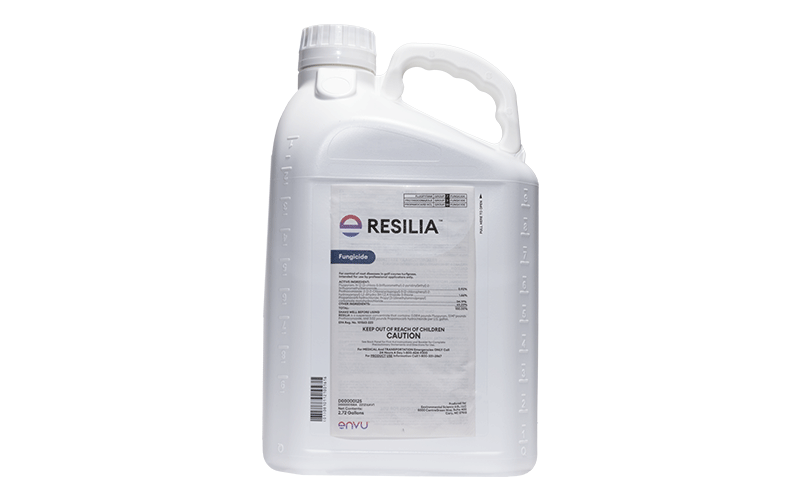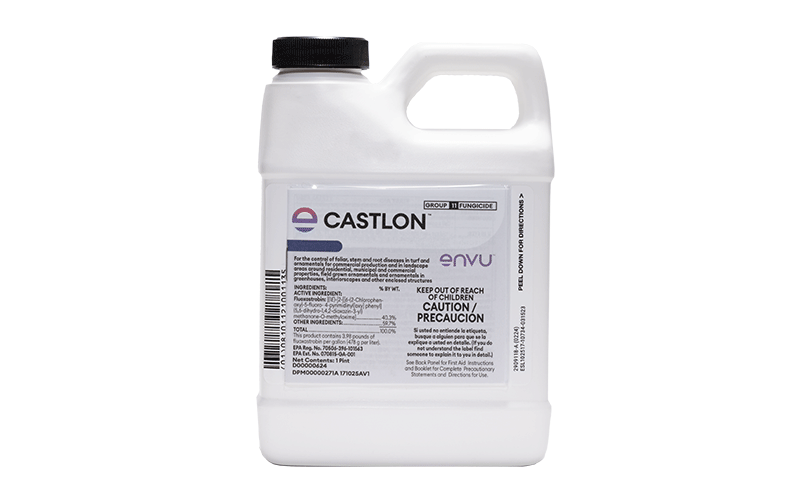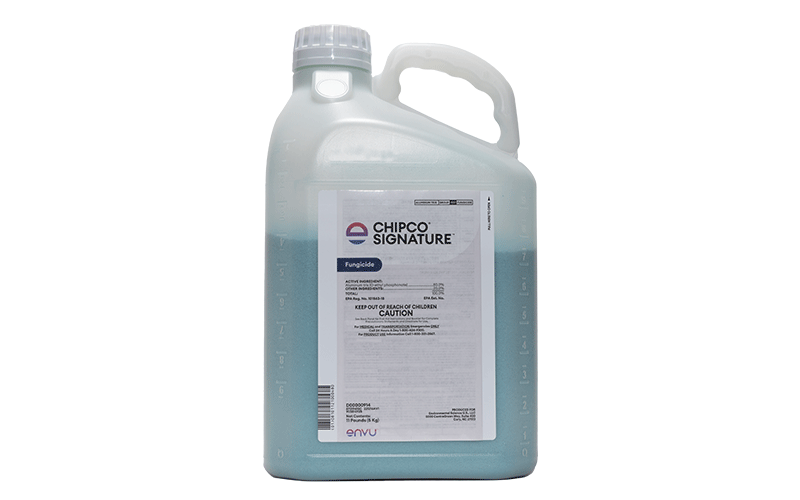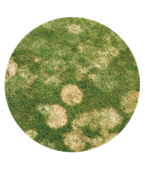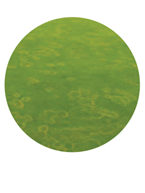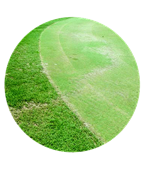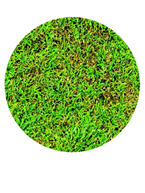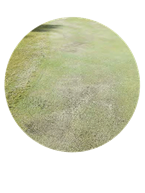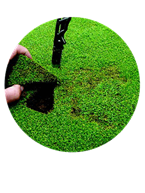The Problem
Mini ring is a fungal disease caused by Rhizoctonia zeae that attacks the crown and sheath of bermudagrass. The pathogen can be active spring, summer and fall. Damage can appear as bronze patches a few inches to a few feet in size, but symptoms vary. The disease can rapidly appear on slow-growing bermudagrass in the summer or on bermudagrass that is going into dormancy in the fall. Mini ring symptoms were first reported in the late 1990s on Tifdwarf golf greens in South Carolina and Florida.
Mini ring has been documented on all ultra dwarf bermudagrass varieties commonly used for golf greens, including TifEagle, Champion and MiniVerde. Low nitrogen fertility creates plant stress, and the effects can be pronounced on shallow-rooted ultra dwarf bermudagrasses. The disease has also been reported on Tifdwarf and Tifgreen, two older bermudagrass varieties once commonly used for golf greens.
What To Look For
The frog-eye mini ring symptoms are most commonly seen in the late summer through fall. The mini ring symptom may actually be a result of earlier damage during late spring or early summer. Fall symptoms on bermudagrass are worrisome to a golf course superintendent as they can last through the winter on semi-dormant or dormant greens. In the lab, R. zeae. is distinguished from other Rhizoctonia species by having numerous very small sclerotia when cultured on agar media. Increasingly, molecular methods are being used to help identify R. zeae.
The Solution
Cultural practices can be used to improve bermudagrass plant health and reduce risk of mini ring. Cultural practices to minimize mini ring include adequate nitrogen fertilization, especially spoon-feeding with urea since ammonium nitrate can enhance symptoms; promote rooting through summer aerification; avoid vertical mowing or aggressive cultivation during conducive weather; and limit use of thiophanate methyl which may increase symptoms.
Prevention of mini ring by fungicides is critical because any bermudagrass injury in the fall can last until the following spring. Also, curative applications are less effective in controlling mini ring. Preventative applications should begin in the spring, when maximum daytime temperatures are above 85°F, and continue until late summer/ fall. Mini ring control recommendations include Densicor® and Mirage® Stressgard® to target R. zeae. In summer, preventative applications of Signature™ XTRA Stressgard or Chipco® Signature plus a contact fungicide applied to prevent summer decline can improve plant health and reduce fall symptoms of R. zeae. Signature Brand Fungicides contain Stressgard, which mitigates stress by improving density and wear tolerance, as well as turfgrass color. Past research has shown Signature or Signature XTRA alone can improve turfgrass photosynthesis under low-light conditions in controlled studies (Huang and Liu, International Turfgrass Society Research Journal, 2009).
Additional resources
| Solution sheet - Mini ring |

